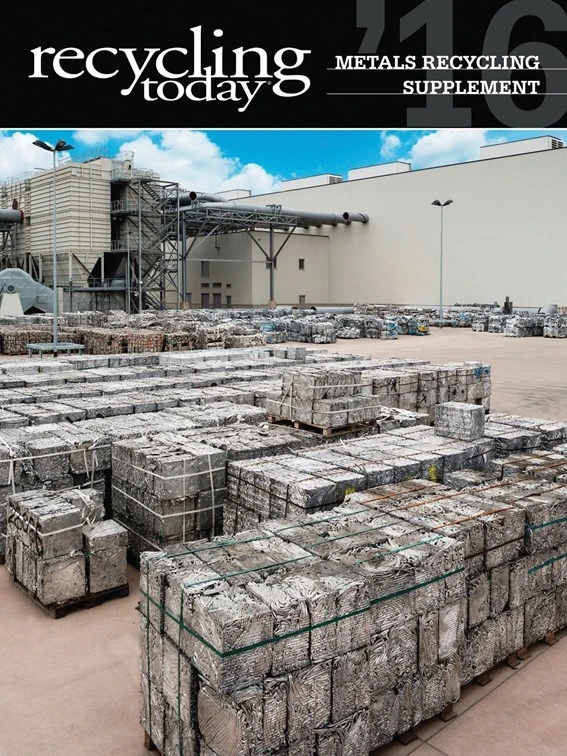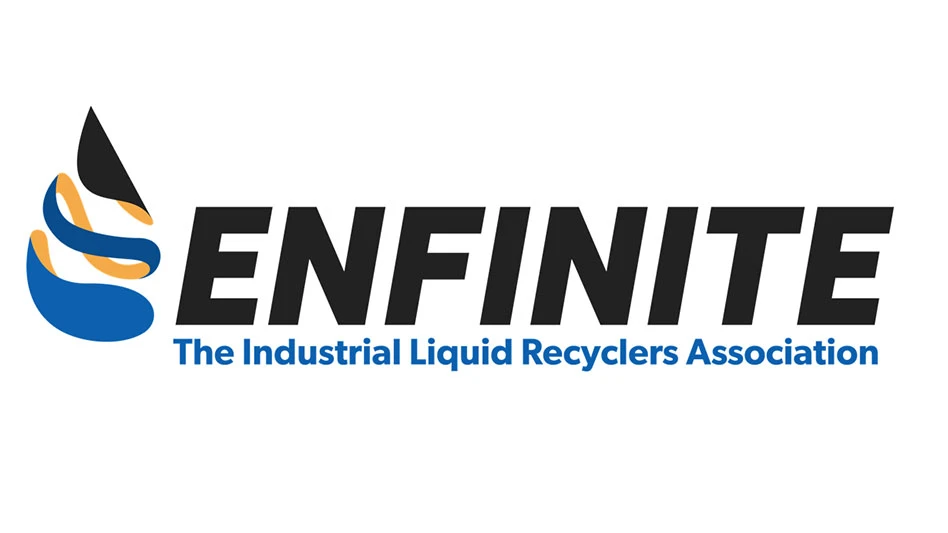
Nonferrous scrap traders have long used the practice of hedging to protect themselves against price volatility and also to ensure a modest profit on their inventories. But the practice of hedging on steel scrap, which involves far greater tonnages at lower per-ton prices, has not been common practice.
However, at least a few commodity exchanges are looking to change that. Several new futures products are being marketed as new options for traders, consumers and recyclers looking to protect against losses or to ensure their supply of raw material at a fixed price. These join two existing steel scrap futures contracts that have been on the market for a few years.
Considering that some of the contracts are new or haven’t been launched as of press time, whether these new tools will take root with dealers remains to be seen.
However, the fact that futures contracts for steel scrap will be available to a greater degree than in the past indicates that steel scrap futures might be a strategic financial option that’s time has finally come.
NEW CONTRACTS
The London Metal Exchange (LME) on Nov. 23, 2015, launched two new ferrous futures contracts—LME 80/20 Turkish delivery The Steel Index (TSI) Index and LME Steel Rebar—plus a futures contract for LME aluminum premiums (a suite of regional contracts designed to help the global aluminum community hedge regional premium exposure, discover transparent on-exchange premium prices and take delivery of readily available metal). According to the LME, they are the first new contracts it has offered in more than five years.
The LME says the new steel futures contracts are designed to help metals traders protect themselves against volatility in the ferrous market, which has been a force to be reckoned with this year.
According to Pittsburgh-based Management Science Associates’ Raw Material Data Aggregation Service (RMDAS), the U.S. average price for No. 1 heavy melting steel (HMS) in November 2015 was $153 per ton, a decline of more than 50 percent since the start of 2015.
The LME 80/20 Turkish scrap delivery average price over the same period was $193 per gross ton, having fallen from the $319 range since January 2015. (It should be noted that the LME’s 80/20 HMS does not meet the same specifications as U.S. No. 1 HMS and this price is of greatest interest to U.S.-based scrap exporters.)
The LME says the new contracts can complement its existing physically settled ferrous contract, LME Steel Billet. With the three products, the exchange says it is offering contracts to complete the production value chain for long steel products, from inputs (steel scrap) to semifinished products (steel billet) to finished products (steel rebar). In addition, the LME says combining the steel billet contract with the new scrap and rebar contracts may offer an ideal balance between physically settled and financially settled contracts.
The LME is not the only exchange that is introducing steel scrap futures contracts. Stockholm-based Nasdaq Commodities (Nasdaq OMX) announced in October 2015 that it would launch futures contracts for U.S. shredded steel scrap (Midwest U.S. Shredded Steel TSI Index Futures) and iron ore cost and freight China (CFR China 62 Percent Iron Ore TSI Index Futures) in January 2016, followed by U.S. hot-rolled coil and other products in 2016.
The Nasdaq futures contracts will be settled against TSI indices, and the LME products will be settled against leading benchmark prices from Platts and TSI.
The Nasdaq futures contracts are to be marketed with the assistance of its partner, World Steel Exchange Marketing (WSEM), a financial services firm based in Englewood Cliffs, New Jersey.
Peter Marcus of the steel information firm World Steel Dynamics (WSD), also of Englewood Cliffs, founded WSEM.
The new steel scrap contracts will compete with two already offered by Chicago-based CME Group: U.S. Midwest No. 1 Busheling Ferrous Scrap (settled based on the American Metal Market U.S. Midwest No. 1 Busheling Ferrous Scrap Index), introduced in 2012, and HMS 80/20 Ferrous Scrap, CFR Turkey (settlement based on Platts pricing), which was introduced in early 2013.
PROMISING BENEFITS
John Conheeney, president of WSEM, says scrap and steel traders can use the futures contracts in multiple ways, with what he calls the most obvious benefit being able to leverage their market insights with a financial tool without impacting their physical market positions.
“A trader can think prices are going higher on a Monday and get long (buy) futures, and then change his mind on Friday and completely reverse his view and sell the market short,” he says.
He remarks that in the nonferrous market, it’s said that virtually every metric ton of production is hedged, and there is no reason to believe that this will not always be the practice. This technique can also be employed on the ferrous side.
“Steel scrap hedging is still in its infancy, and it is very exciting for us at WSEM and WSD to be part of it,” he says.
“Nasdaq sees that the U.S. shredded [contract] could become the anchor product for the ferrous sector. Its price well represents all obsolete scrap products.” – John Conheeney, WSEM
Conheeney comments that dealers will be able to protect their margins by locking in prices with the futures and protecting their inventories’ values.
For those unfamiliar with the mechanics of trading index futures, Conheeney says, “It’s like buying a stock index with two important differences: a) the contract expires on a specific date, which means you can’t hold the position forever; and b) holding the position requires that exchange’s set margin is posted, which is a fraction of the full value of the contract.”
He also points out that unlike copper futures, there is never any physical delivery on the commodity.
Upon expiration of the futures contract, Conheeney says, the value of the contract is settled based upon the indexed price at that time. In the case of the Nasdaq products, that price is based upon the TSI index price as of the 10th of the month, he adds.
Processors can use the contracts to speculate and thus ensure a profit, such as when they know the market is likely to move higher or lower. If the scrap processor believes the market is going higher, Conheeney says, “the only option he has now is to place more scrap in inventory and incur all of the expenses that come with that exercise.”
But, if there are futures contracts available, he says, that processor instead can call his broker and buy the futures contract at a fraction of the cost instead of purchasing inventory that must be shipped and warehoused. The required margin on the LME steel scrap is about 13 percent of the contract’s underlying value, Conheeney says, which means the trader can use considerable leverage on his buys in addition to the convenience of futures trading.
“An additional benefit to the futures is that he is free to liquidate his position at any time or even reverse himself and go short,” Conheeney adds.
Conheeney points out that mills also can benefit from steel scrap futures because the contracts allow them to buy shredded scrap futures forward up to 12 months.
“This would allow them in turn to offer their finished product customers a fixed price instead of one that rises and falls with the prices of scrap each month,” he says. “This would provide some mills with a competitive advantage.”
Conheeney observes that all four of the major minimills own shredders and are captive suppliers to their own mills, as well as being suppliers to integrated mills and foundries. As such, they all hold shredded scrap in inventory and face considerable price risk each month.
Processors also can use the futures contracts to lock in a rate of return on their inventoried scrap. For example, if a trader can buy scrap at $200 per ton in December 2015 and sell November 2016 futures for $250, he just made 25 percent on the investment before financing and warehousing costs.
Traders also may be able to use the contracts to trade one commodity, such as hot-rolled coil, against another, such as shredded scrap, Conheeney says.
GOOD TIMING
The use of steel scrap futures as a financial hedging tool has not been a common strategy for most scrap dealers around the world, but other industry groups have made use of this tool.
Conheeney says some steel service centers are using the CME Group’s CRU Midwest U.S. HRC (hot-rolled coil) futures contract, which has been traded since 2009. In addition, he says ferrous futures trading in China has exploded from the start, when rebar futures began trading on the Shanghai Futures Exchange (SHFE) in March 2009 and now trade about 30 times physical consumption.
Conheeney says he believes hedging in the steel industry was not necessary in the past because from the post-World War II era until around 2004, steel scrap prices weren’t particularly volatile, and mills often were able to enter into long-term contracts with end users.
“Even with the surge in price volatility between 2003 to 2015, the mills have been able to ‘hedge’ their risk by pushing price risk down the supply chain by the use of scrap surcharges on their finished products,” Conheeney says. However, he adds that many of the mills discovered that the surcharges disrupted production schedules because users would cancel orders if they learned that prices would be lower in the future.
In addition, Conheeney says U.S. steel mills have been reluctant to support the use of HRC futures, fearing the loss of pricing power.
He says that while traditional futures contracts required physical delivery, steel, steel scrap and iron ore, unlike billet, are not suitable for warehousing and delivery.
Presently, Conheeney says there is little recycler participation outside of China in steel futures markets. The U.S. HRC contract on the CME has modest participation among mills, service centers and end users. On the Singapore Exchange (SGX), iron ore futures for delivery in China are being used by a broad mix of miners, mills and traders inside and outside of China.
Inside of China, he continues, rebar, iron ore and coking coal trading volumes include a high percentage of speculators.
Considering these developments, Nasdaq calculated that steel and raw materials trading outside of China has barely tapped growth potential, according to Conheeney.
“Nasdaq sees that the U.S. shredded [contract] could become the anchor product for the ferrous sector,” he says. “Its price well represents all obsolete scrap products.”
To begin trading, a processor needs only to open a futures account with a futures broker, then he or she can execute trades either by calling the broker, accessing a trading screen or by going through an OTC (over-the-counter) broker who will call various market participants to execute the trade.
Conheeney says some recyclers naturally may be more inclined to hedge, particularly those with inventory price exposure month in and month out, as well as those who value being able to go long or short by trading futures.
QUESTIONS THAT REMAIN
Some individuals within the industry are skeptical of the ideas of hedging steel scrap inventories through the use of steel scrap futures. Don Zulanch of Cohen Recycling, based in Middletown, Ohio, hasn’t yet been convinced, though he also points out it’s not something he’s tried.
However, Zulanch says his company does hedge its copper purchases, and he notes that the practice has yielded a good profit. But, he says, recyclers, by their nature, are gamblers and hedging is not in line with that mentality.
“Steel scrap hedging is still in its infancy, and it is very exciting for us at WSEM and WSD to be part of it.” – John Conheeney, WSEM
“This is a risky business anyway, and to take the risk out of the business and just make $5 or $10 a ton when you’re covering, it just never made a lot of sense to us,” he says.
Zulanch also says he believes the practice of hedging might take away from a company’s potential upside profits. “Hedging is not going to let you make a lot of money,” he says. “It covers your expenses and gives you breathing room and a little bit of profit.”
A NEW OPTION
Conheeney says that as the January 2016 launch of the U.S. shredded steel scrap futures contract approaches, traders have been opening accounts.
“Unlike almost every other grower, miner, processor, merchant trader and commodity user in the world, those in the steel industry have had little access to futures to help them manage the price risk,” he says. And, as is the case with every new option, Conheeney adds, the use of steel scrap futures undoubtedly will involve a learning curve.
He says the staff at WSEM is well-equipped to take on this challenge, using what he calls its collective experience in futures trading, contract development and steel markets.
“Over time, growing public confidence in the indices will boost trading volumes in the futures,” Conheeney says.

Explore the Jan 2016 Metals Recycling Supplement Issue
Check out more from this issue and find your next story to read.
Latest from Recycling Today
- Greenville, Mississippi, launches aluminum can recycling program
- Cotton Lives On kicks off 2025 recycling activities
- Georgia-Pacific names president of corrugated business
- Sev.en Global Investments completes acquisitions of Celsa Steel UK, Celsa Nordic
- Wisconsin Aluminum Foundry is a finalist for US manufacturing leadership award
- MetalX announces leadership appointments
- Sofidel agrees to purchase Royal Paper assets
- US Plastics Pact report charts expansion path for recycled content in packaging





